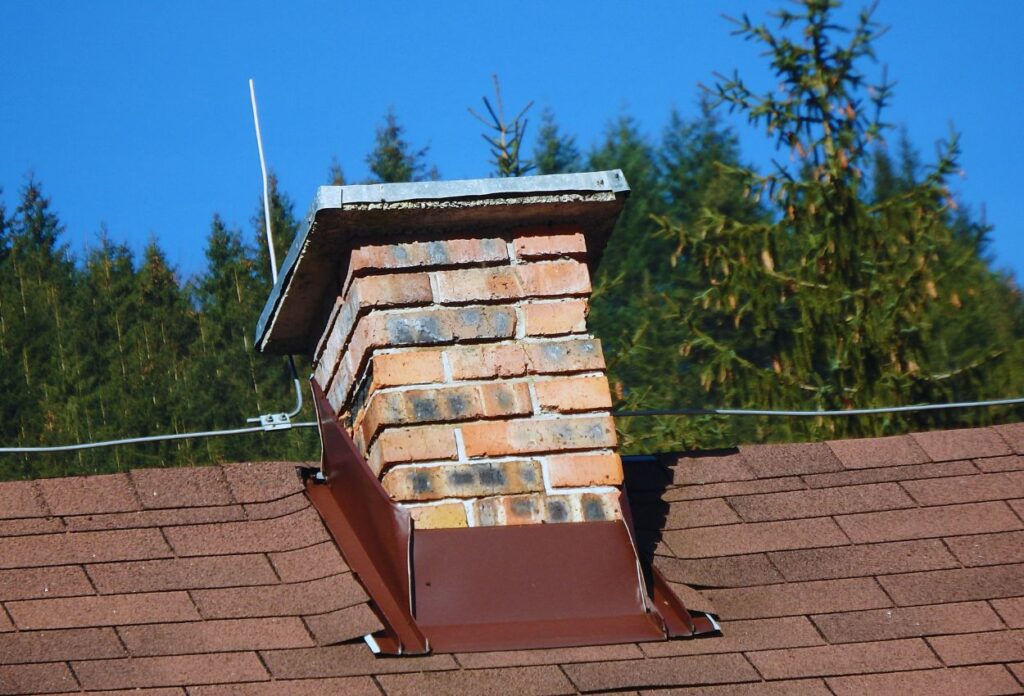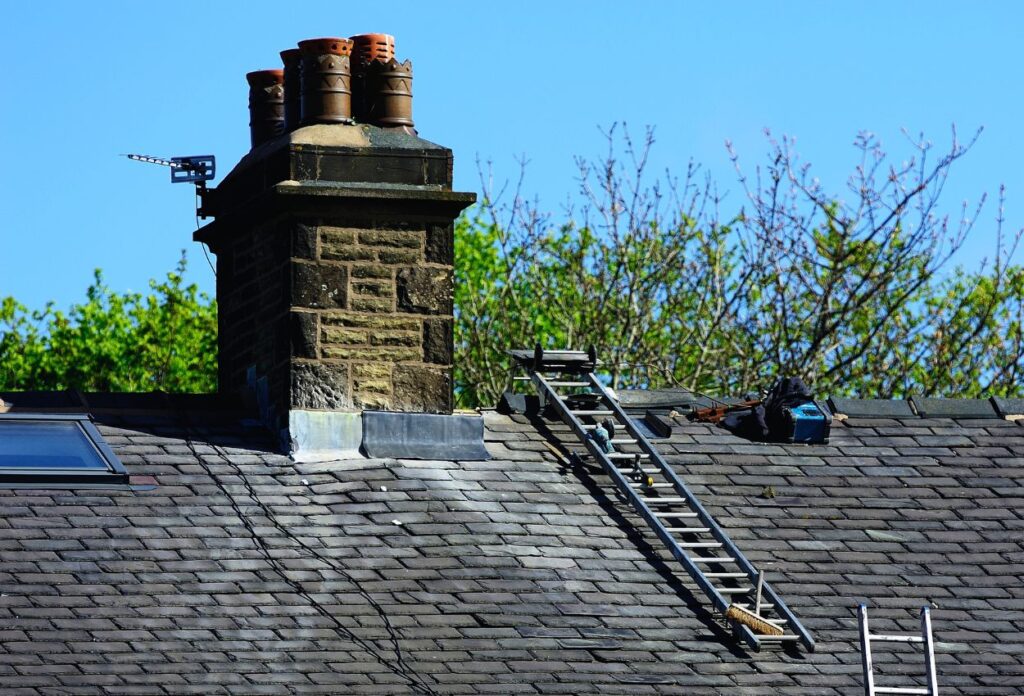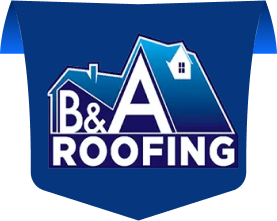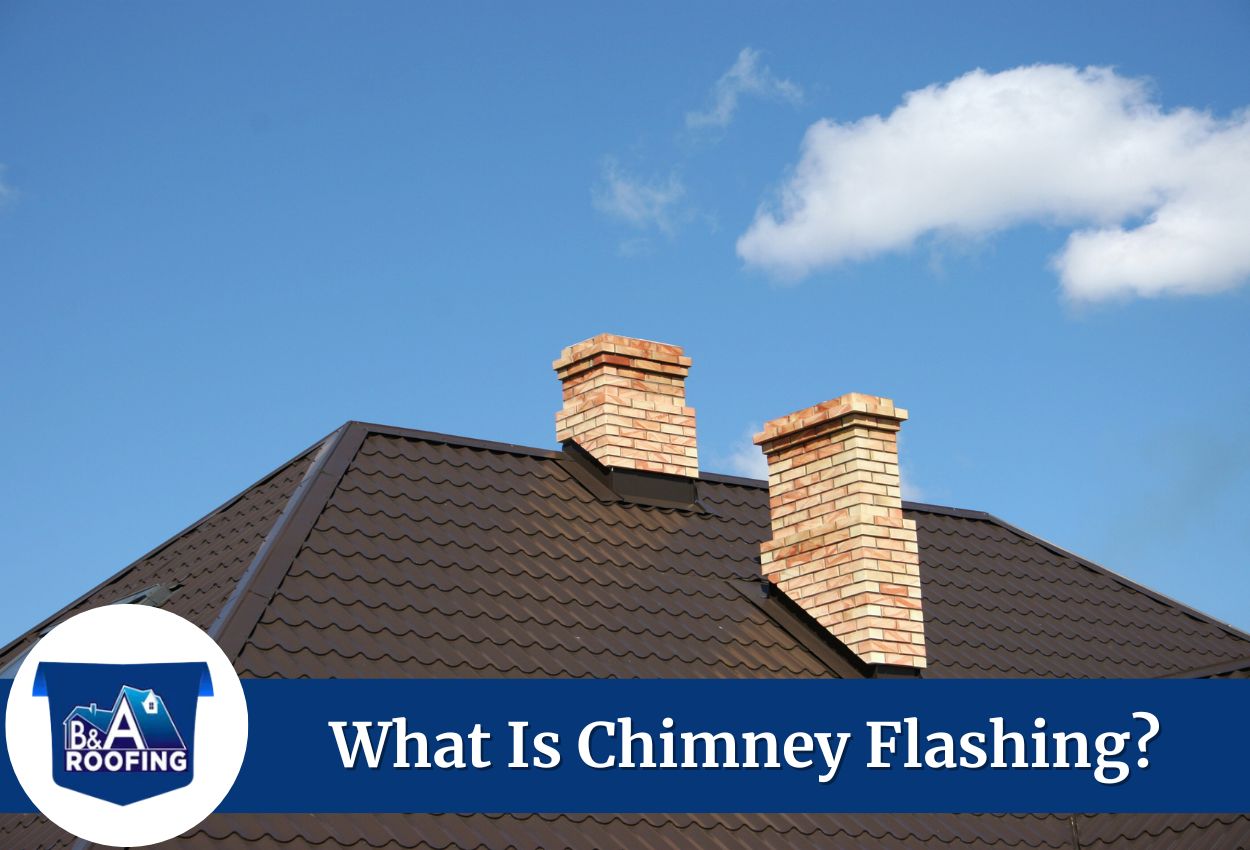Water always looks for the weakest point in your home to enter through, and the spot where your chimney meets the roof is a common target. That’s why chimney flashing is so important — it acts as a crucial barrier, preventing leaks and protecting your home from the elements. Yet, despite its crucial role, it’s often overlooked during regular home maintenance practices.
To help you learn more about this important feature of your roof, we’re here to answer the question: what is chimney flashing?
What Is Chimney Flashing?

Flashing around the chimney is an essential component of your roof that helps prevent water from leaking through along the area where the chimney and roof meet. Complete chimney flashing consists of three main parts: base flashing, step flashing, which runs up the sides of the chimney, and counter flashing, which covers the step flashing and is sealed into the chimney’s mortar. Made from strong materials like aluminum, copper, or stainless steel, it protects both the chimney and the roof from leaks, mold, and rot. To keep it in good shape, regular inspections and maintenance are essential.
Also Read: A Guide To Chimney Leak Repair (2025)
What Are The Different Types Of Chimney Flashing?
Now that you know what chimney flashing is. Here is a look at the different types of chimney flashing and their roles.
1. Base Flashing:
This is the first layer of chimney flashing that sits along where the chimney meets the roof. It extends up the chimney wall and out over the shingles to help keep water from seeping in. It’s usually sealed with roofing cement or underlayment for a secure fit.
2. Step Flashing:
Made of L-shaped metal pieces, step flashing on a chimney is layered along the sides of the chimney in a stair-step pattern. Each piece overlaps the one below it, guiding water away from the chimney and roof.
3. Counter Flashing:
Also called cap flashing, this piece is installed over chimney roof flashing and embedded into the chimney’s mortar joints. It adds an extra layer of protection by sealing the flashing on a chimney and keeping water out.
4. Apron Flashing:
This is a single, continuous piece of flashing that covers the entire front base of the chimney. It provides a smooth, watertight barrier and is often used alongside other types of chimney roof flashing.
5. Cricket or Saddle Flashing:
Designed for wider chimneys, this type creates a peak that directs water and snow away, preventing buildup around areas on the roof that surround the chimney.
What is The Importance of Chimney Flashing On Your Roof?
Let’s explore further why chimney flashing is essential for keeping your roof and home in good shape:
1. Prevents Water Damage:
Chimney flashing forms a waterproof seal between the chimney and the roof, keeping water out and protecting the structure from leaks and deterioration.
2. Protects Roofing Materials:
It directs water away from vulnerable areas, preventing damage to shingles, wood rot, and other roofing issues. Proper chimney roof flashing ensures that water doesn’t seep into the roof deck.
3. Preserves Chimney Integrity:
By keeping water from seeping into the roof with chimney flashing, you prevent the mortar from breaking down, the metal components from rusting, and the structure from weakening.
4. Improves Energy Efficiency:
Proper flashing around a chimney reduces drafts in winter and blocks hot air in summer, helping to maintain indoor temperatures and lower energy costs.
5. Reduces Repair Costs:
By preventing water damage, flashing around a chimney helps homeowners avoid expensive repairs to the roof, chimney, and interior of the home.
6. Prevents Interior Damage:
A chimney that’s properly sealed with roof flashing stops water from causing stains on ceilings and walls, mold growth, and other expensive interior problems.
7. Enhances Curb Appeal:
Well-installed chimney flashing not only protects your home but also adds a clean, finished look to your roof with a chimney.
Also Read: How Chimney Removal Affects Your Roof & How To Avoid It
What Is The Best Chimney Flashing Material?
In order to get the best out of your chimney flashing installation, you want to make sure that you’ve selected the right material for your needs. Here are a few different types of chimney flashing materials:
1. Aluminum Flashing:

Affordable and easy to install, aluminum chimney flashing is lightweight and can be powder-coated to match home accents. However, if not properly coated, it may corrode, especially when in contact with treated shingles or lumber.
2. Copper Flashing:
Known for its durability and elegant look, copper chimney roof flashing resists weathering and can last for decades. It develops a patina over time, which some homeowners appreciate but others may not, so keep this in mind
3. Steel Flashing:
Galvanized steel flashing is often chosen for chimneys because it’s strong, rust-resistant, and built to handle harsh weather. However, it is heavier and more challenging to install compared to aluminum or copper.
4. Vinyl or PVC Flashing:
Lightweight and easy to install, vinyl or PVC flashing is best for chimneys located on homes in mild climates. However, it lacks durability and does not hold up well in extreme weather.
How Much Does Chimney Flashing Cost?
To help you plan and budget for the project, let’s explore the factors that affect the cost of chimney flashing:
Factors Affecting Cost
- Chimney Size and Shape: Larger or uniquely shaped chimneys require more material and labor, increasing costs.
- Flashing Material: The type of flashing material impacts the price:
- Steel: Around $0.50 per foot, durable but heavier
- Aluminum: Costs about $0.75 per foot, lightweight, but prone to corrosion
- Copper: The most durable, priced between $2 to $3 per foot, developing a patina overtime
- Roof Complexity: Steep or high-pitched roofs require extra safety measures, increasing labor costs
- Scaffolding: If scaffolding is necessary, costs rise significantly, especially for multi-story homes
Cost Breakdown
- Minor Repairs: Fixing small sections of flashing chimney roof typically costs between $200 and $500.
- Replacement Costs
- Without Scaffolding: Generally ranges from $400 to $1,600, with an average of $1,000.
- With Scaffolding: Can exceed $1,600, particularly for complex or large chimneys.
Seasonal Tips for Chimney Flashing Maintenance
To keep your chimney in top shape, here are some seasonal maintenance tips to follow:
- Schedule Regular Inspections: Have your chimney flashing, along with the rest of your roof, checked at least once a year to catch issues like rust, cracks, or missing sections before they worsen.
- Keep Flashing Clean: Remove debris and moss buildup to maintain proper water flow and prevent deterioration.
- Ensure Proper Roof Drainage: Make sure your roof with the chimney has the right slope to direct water away, preventing pooling around the flashing.
- Seal Small Cracks Quickly: Use high-quality waterproof sealants to fix minor gaps before they lead to bigger problems.
- Invest in Durable Materials: Stainless steel and copper offer longer-lasting protection compared to standard materials.
- Ensure Correct Installation: Properly installed chimney flashing should include step and counter flashing to create a watertight seal.
- Perform Routine Maintenance: Address any wear or damage promptly and reapply sealants as needed to maintain a strong barrier against water intrusion.
Keep Your Chimney in Amazing Shape With B & A Roofing and Gutters
Has your chimney started to show signs of damage? Don’t wait until small problems turn into expensive repairs. At B & A Roofing and Gutters, we offer expert chimney services, from thorough inspections and repairs to full rebuilds. Our experienced team ensures your chimney stays in good condition, protecting your home from leaks, fire hazards, and structural issues. Trust us to keep your home safe, warm, and worry-free for years to come.


